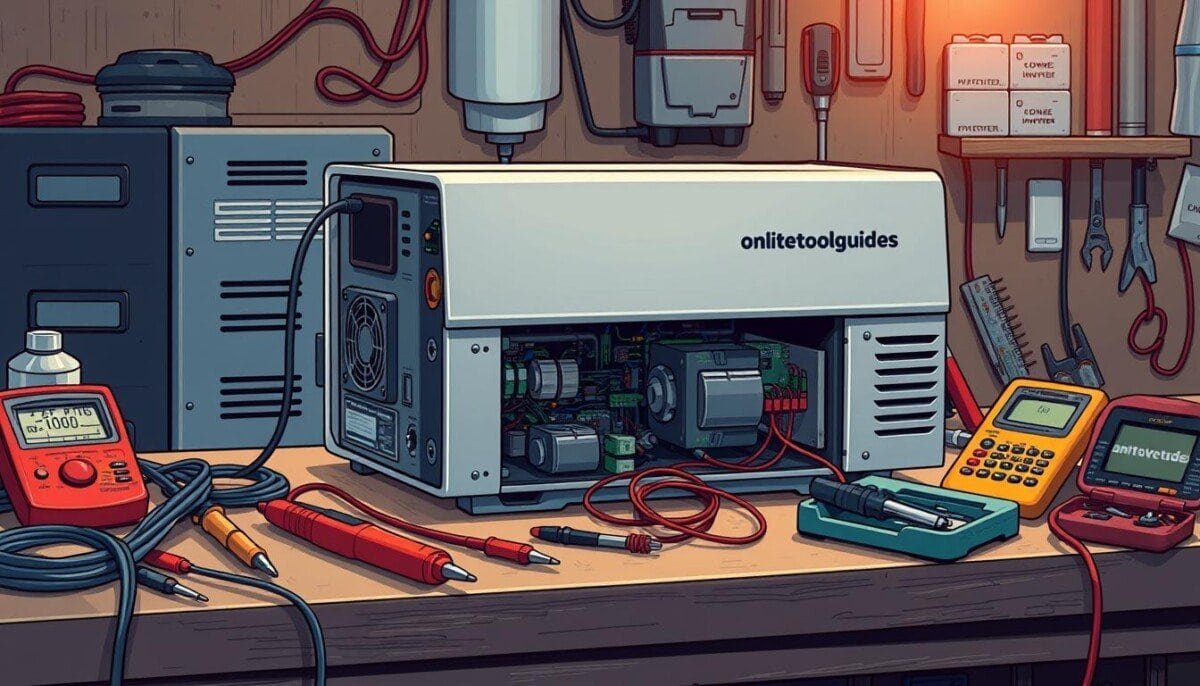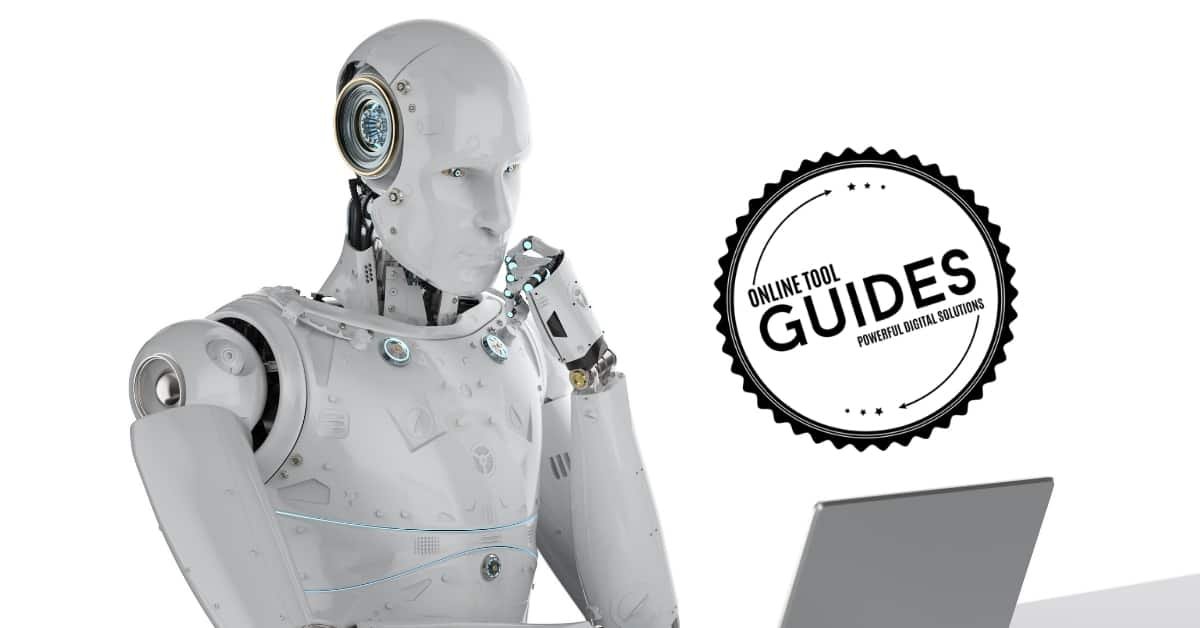Did you know that faulty power switches and loose connections are common reasons for power inverter failures? Inverters are key for turning DC power into AC. This lets us use many electrical appliances efficiently. Knowing how to fix power inverter problems can make your maintenance routine better.
By spotting issues like an inverter not starting or having output voltage problems, you can fix them. This ensures you have power when you need it most.
Key Takeaways
- Recognize the common faults causing inverters to fail, including faulty power switches and loose battery connections.
- Be aware of the symptoms of inverter problems like continuous alarm beeping or false LCD codes.
- Understand the importance of regular troubleshooting techniques for effective power inverter maintenance.
- Learn the average wattage for inverters to ensure you select an appropriate model for your needs.
- Follow safety precautions when diagnosing issues to prevent further damage or injury.
Understanding Power Inverters
Power inverters are key in changing direct current (DC) to alternating current (AC). This is important for powering devices that need AC. Knowing what is a power inverter shows its value in many places.
What is a Power Inverter?
A power inverter changes DC electricity from batteries or solar panels to AC. This is key for using household appliances. It’s useful at home and in businesses. Power inverters use special parts to work well.
How Do Power Inverters Work?
Power inverters work in three main steps:
- Oscillator: This makes a waveform, usually 50 or 60 Hertz.
- Amplifier: It boosts the signal for changing.
- Output Power Transformer: This makes the signal ready for the output.
Knowing how do power inverters work helps fix problems. Issues like bad switches or battery problems can stop them.
Common Applications of Power Inverters
Power inverters are used in many places. They are very useful. Some common uses are:
- Homes, for backup power
- RVs, for using standard appliances
- Electronic gear, for working right
- Big machines, for better work
Looking at power inverter applications shows they are crucial. They are especially important when AC power is not always there.
Common Symptoms of Power Inverter Problems
Knowing the Symptoms of Power Inverter Problems is key to keeping your system running well. Issues like an inverter not turning on, voltage problems, or overheating can happen. Spotting these signs early can stop bigger problems.
Inverter Not Turning On
There are several reasons why an inverter might not start. Some common reasons include:
- Faulty power switch
- Loose battery connections
- Tripped circuit breaker
- Battery depletion, often noted when the voltage drops below 10.8 volts
Fixing these issues quickly can avoid long power outages.
Output Voltage Issues
Problems with the output voltage can really mess with how devices work. Signs include:
- Poor waveform quality, leading to unstable power
- Voltages inconsistent with device specifications
- Persistent alarms indicating overload or voltage irregularities
Keeping an eye on these things helps keep your equipment running smoothly.
Overheating Problems
Power inverters often get too hot. This can be due to:
- Overloading beyond the inverter’s capacity
- Poor ventilation in the installation area
- Faulty fans that fail to cool the system
Regular upkeep and correct setup are crucial to avoid these problems and make your inverter last longer.
| Symptom | Possible Causes | Recommendations |
|---|---|---|
| Inverter Not Turning On | Faulty switch, Loose connections, Battery issues | Check connections, Test battery health |
| Output Voltage Issues | Poor waveform, Device incompatibility | Use high-quality inverters, Monitor device ratings |
| Overheating Problems | Overload, Insufficient cooling | Reduce load, Ensure proper ventilation |
Diagnosing Power Inverter Issues
Fixing power inverter problems needs a careful plan. Look for symptoms, use the right tools, and know error codes. This way, you can solve issues fast and keep your power supply steady. Check connections for loose wires or corrosion, as these can easily disrupt functionality. When troubleshooting power supply problems, ensure the battery is fully charged and compatible with the inverter’s specifications. Regular maintenance and inspections can also prevent recurring issues and extend the life of your equipment.
Step-by-Step Diagnosis
Start by checking the input voltage and frequency. Make sure they match what the inverter needs to work right. Watch out for these signs:
- Battery voltage over 16V on a 12V system.
- AC output seeing loads bigger than it can handle.
- Internal temperature too high, over 60°C/140°F.
- Loose or corroded battery connections causing low power.
Each problem can hurt how well the inverter works. Check the temperature range, usually 0°C to 40°C. Also, make sure cables are the right length and gauge to avoid voltage loss.
Tools Required for Troubleshooting
For good troubleshooting, you need certain tools. Here are the main ones:
- Multimeter for voltage and continuity checks.
- Heat gun to measure internal temperatures.
- Wrenches and brushes for battery connection checks.
Using these tools helps find and fix power inverter problems well and fast.
Understanding Error Codes
Knowing power inverter error codes is key. They tell you what’s wrong and how to fix it. Common codes mean:
- Too high or too low voltage.
- Too much current or overload.
- Short circuit or ground fault.
Looking at the manual can help understand these codes. Knowing them quickly helps fix problems fast and makes things more efficient.
| Diagnosing Step | Common Issues | Recommended Action |
|---|---|---|
| Check Input Voltage | Batteries overcharged | Inspect battery status |
| Assess Load on Output | Exceeding inverter capacity | Reduce load or upgrade unit |
| Monitor Internal Temperature | Overheating concerns | Contact service center if above limits |
| Inspect Connections | Corrosion or loosening | Clean and secure connections |
| Verify Cable Lengths | Voltage drops | Use recommended lengths and gauges |
Resolving Power Inverter Not Turning On
When a power inverter won’t turn on, checking the basics can fix it fast. Look at power sources, make sure connections are good, and maybe reset the inverter.
Checking Power Sources
Start by checking the battery power. A fully charged battery is key for the inverter to work right. Use a multimeter to check the voltage at the inverter’s terminals. Make sure the voltage is enough.
If the voltage is low, charge the battery or replace it if needed.
Inspecting Fuses and Connections
Checking fuses is important when the inverter won’t turn on. Look for blown fuses that can stop power flow. Replace any blown fuses with the right ratings to avoid too much current.
Also, check all connections for damage or rust. Bad connections can stop power from flowing, causing problems.
Resetting the Inverter
If the first steps don’t work, try resetting the inverter. Use the reset button or switch to fix small electronic problems. If it still doesn’t work, look in the manual for specific help for your model.
Addressing Output Voltage Problems
Fixing output voltage issues needs careful thought. Knowing how to find and fix these problems can make a power inverter work better and last longer.
Testing Output Voltage Levels
Start by checking the output voltage. Use a multimeter to measure the voltage at the inverter’s output. This makes sure the voltage is right.
If the voltage is too low, there might be a problem. Testing helps find these issues.
Adjusting Input Settings
Changing input settings is key to fixing problems. Make sure the battery voltage is in the right range. It should be above 11V but below 15V.
If the voltage is off, it can cause big problems. You need to fix it right away.
Identifying Load Issues
Load problems can hurt a power inverter’s performance. Check if the load is too heavy for the inverter. Make sure no device uses more power than allowed.
Too much load can stop the inverter from working and might damage it. Keeping the load balanced helps the system run well.
Dealing with Overheating
Overheating is a big problem for power inverters. It can make them work poorly and even break. Knowing what causes overheating is key to fixing it.
Things like bad air flow, too hot surroundings, and too much load can cause it.
Causes of Overheating in Inverters
Finding out why inverters overheat is important. Here are some main reasons:
- Poor air flow makes heat build up.
- Too high temperatures can harm parts like capacitors and transistors.
- Design issues or too much load can make more heat than can be cooled.
Cooling Solutions and Techniques
There are ways to cool down inverters and stop overheating. Some methods are:
- Make sure there’s good air flow around the inverter.
- Put in cooling fans to help get rid of heat.
- Use heat sinks and thermal interface materials (TIMs) for better cooling.

Maintenance Tips to Prevent Overheating
Keeping your inverter in good shape is important. Here’s how to do it:
- Clean the cooling systems to keep air flowing well.
- Check the fan works right to make sure it’s cooling well.
- Watch the temperature and don’t use it when it’s too hot.
By knowing about overheating and using the right fixes, you can make your inverter last longer and work better.
When to Seek Professional Help
Knowing when to get help for power inverter problems can save time and avoid more damage. Some issues might seem small but can mean big problems that need a pro. It’s important to know the signs to fix things fast and keep your inverter working well.
Signs You Need a Technician
Knowing when to call a technician is key to keeping your inverter running right. Here are some warning signs:
- It keeps breaking down even after you try to fix it
- You hear strange noises from the inverter
- It keeps showing error messages that don’t go away
- The power it gives out is not steady
- It looks damaged or is too hot
Choosing the Right Service Provider
When picking a service provider, look for a few important things. You want someone who:
- Knows how to fix power inverters
- Has a good reputation
- Offers clear repair warranties
- Tells you how much things will cost and what they include
Questions to Ask Before Hiring
Before you hire someone, ask them the right questions. This helps make sure you get good service. Here are some questions to ask:
- How much experience do you have with power inverter repairs?
- Can you give me references from other customers?
- What kind of repair services do you offer?
- How do you handle warranty claims if my inverter is still under warranty?
- How long does it usually take you to fix things?
By knowing when to get help, recognizing problems, choosing the right technician, and asking the right questions, you can keep your power inverter in top shape.
| Signs of Issues | Recommended Action |
|---|---|
| Continuous malfunction | Seek professional help immediately |
| Unusual noises | Consult a technician for diagnosis |
| Frequent error messages | Consider professional evaluation |
| Power output inconsistencies | Conduct further testing or call for repairs |
| Physical damage or overheating | Do not operate; find a qualified technician |
Preventive Maintenance for Power Inverters
Keeping power inverters in top shape is key. Regular checks help spot problems early. This stops sudden failures.
Dirt can hurt how well an inverter works. So, keeping it clean is very important. Also, not enough air can make it too hot, causing big problems.
Regular Inspection and Testing
Having a set schedule for inverter checks is vital. Look for loose connections and tighten them. This stops overheating and other issues.
Also, check the keypad when it’s not in use. This helps it last longer. Testing the contacts often keeps everything running smoothly.
Recommended Maintenance Schedule
Make a plan for yearly checks and replacing parts. For example, the cooling fan should be checked every year. Replace it after six years if it’s used a lot.
Doing these things keeps your inverter working well. It also saves money in the long run.
Tips for Extending Inverter Lifespan
To make your inverter last longer, keep its cooling parts clean. Change air filters often and watch how it’s doing. Adding special cleaners and cleaning the heat exchanger helps too.
Following these tips makes your inverter work better. It also means you won’t have to spend a lot on repairs later.



